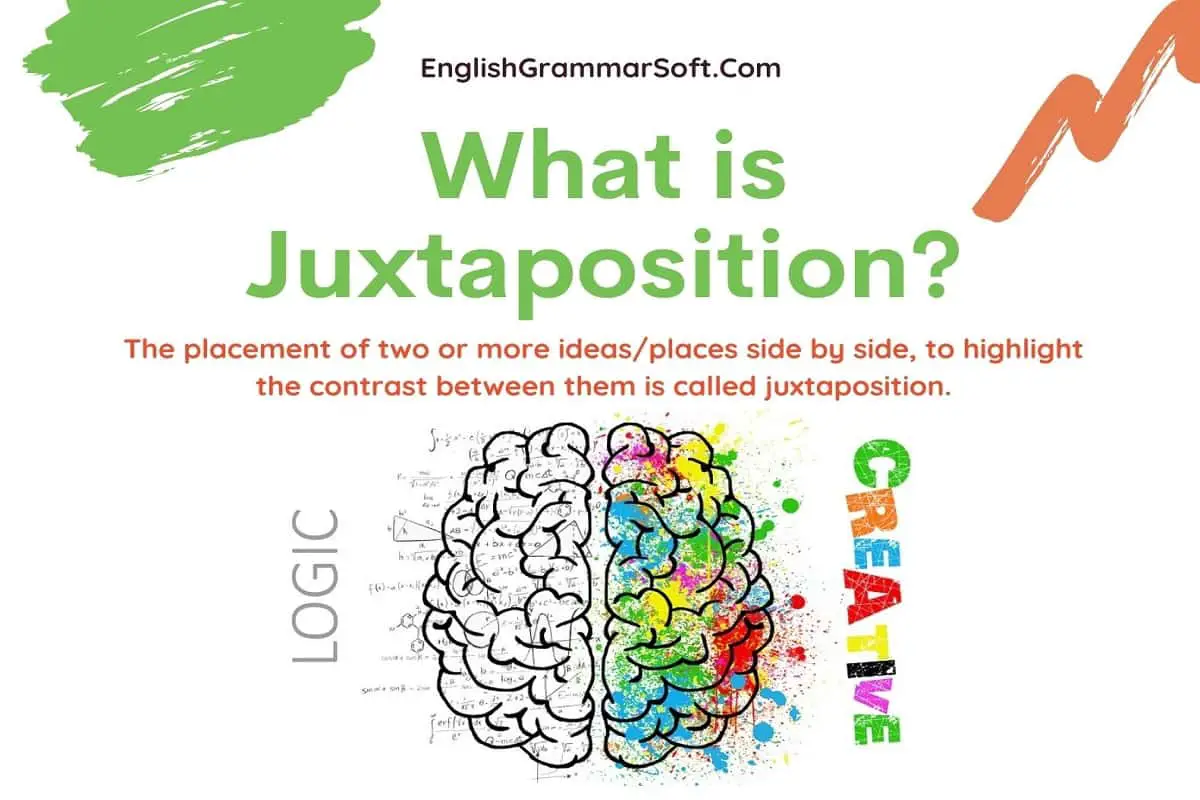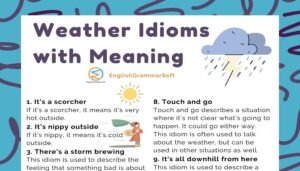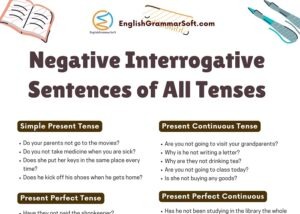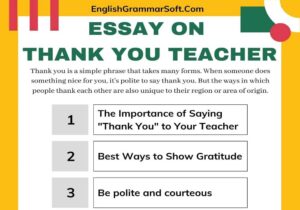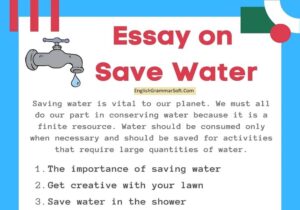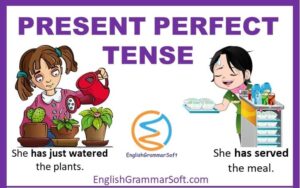What is Juxtaposition? Examples in Literature
What is Juxtaposition?
The placement of two or more ideas and places side by side, to highlight the contrast between them is called juxtaposition. It is a stylistic writing technique, which illustrates the contrast of the two different things. Writers use this kind of writing technique to enable the readers to appreciate the differences between both sides. By placing the two different ideas, one idea is clearly explained.
In literature, it can be used for irony when one event contrasts with another. Writers use this technique to develop a theme or bring attention to an idea. The word juxtaposition can also be used in writing or speech when there is a comparison between two things. This creates a humorous or ironic contrast, which might not have been noticed if they were compared individually rather than together. Examples of this include a building that was once an abandoned warehouse but has now been converted into residential units or when you have two different types of dishes on one table. Juxtaposition can also make for interesting reading; such as this blog post you are currently reading!
Juxtaposition Examples
Here are some common examples of juxtaposition.
- The Town Mouse and the Country Mouse.
- The Prince and the Pauper.
- Rich and poor.
- Two siblings in a story are opposites, one is always good and one is always evil.
- One character is living on the good side of town, another lives on the bad side of town.
- White House and a prison.
- A contrast between two cultures – one that is more traditional and another that is modern.
- An old man with a young woman’s picture.
- Flowers growing next to a pile of garbage.
- The sky was dark and the ground was light.
- I’m not going to tell you that I don’t care about the environment, because I do.
- You could say he’s a little bit of an introvert, but he’s also very outgoing.
Examples of Juxtaposition in different situations
Now, we see the examples of juxtapositions used in different situations.
- A comparison between two different people or things, such as their differences in culture, appearance, age, etc., to show how they are not alike but still connected somehow. One example would be when you see someone who looks like your sibling from behind but then turns around and it’s actually just a stranger
- In other cases, there’s a stark contrast between opposites like light and dark, high and low, or calmness and chaos.
- A good example is when you’re reading something online while simultaneously watching television – it can be difficult to concentrate on both at once because they are so different
- Contrasts can also exist within the same thing or person; for instance if someone appears happy but their words seem sad then we know they’re experiencing some internal conflict.
- Juxtaposition is often used for artistic purposes too by artists who want to convey complex messages about society through simple images or phrases. You can read about juxtaposition in art here.
Examples of Juxtaposition in Literature
This technique is seen frequently in literature where authors use contrasting themes to make points about life (for instance using humor alongside tragedy.
The Yellow birds by Kevin Powers
“You will soon be asked to do great violence in the cause of good”.
Here the ‘violence’ and ‘good’ are juxtapositions with each other. For the purpose of text analysis, the indication of juxtaposition is not enough rather you have to explain the effect of juxtaposition. ‘Kevin’ explains that violence is although not good in a general situation but it can be good at the time of war.
A Midsummer Nights Dream by William Shakespeare
“Merry and Tragical? Tedious and brief?
That is hot ice, and wondrous strange snow!
How shall we find the concord of this discord?
In the above stanza, the juxtaposition are, “Merry” and Tragical”, Tedious and brief”. “Hot ice” and wondrous strange” and concord and discord”. ‘Shakespeare’ takes the characters to a place where there is harmony. All these words are opposite to one another. Meaning thereby, in juxtaposition with one another.
Good Nighty By Dylan Thomas
“curse, bless, me now with your fierce tears, I pray.
Do not go gentle into that good night. Rage, rage
Against the dying of the light”
Here the words, “curse” and “bless” and then “good night” and “dying of the light”. “Thomas” is contrasting the struggle for life and the acceptance of death. Death is often referred to as darkness and we see that here with the dying of the light.
A tale of two cities by Charles Dickens
“It was the best of times, it was the worst of times,
It was the age of wisdom, it was the age of foolishness,
It was the epoch of incredulity, it was the season of light,
It was the season of darkness”.
The juxtaposition in the above stances is between the words, ‘best’ and ‘worst’, ‘wisdom’ and ‘foolishness’ and ‘light’ and ‘darkness’. “Dickens” communities about the idea and shows the difference of classes and their socio-economic difference by declaring that much of life is really a mixture of highs and lows. Some have it all and others have nothing.
“I have a dream” speech by Martin Luther King, Jr.
I have a dream that one day even the state of Mississippi, a state sweltering with the heat of injustice, sweltering with the heat of oppression, will be transformed into an oasis of freedom and justice.
Sonnet 18 by William Shakespeare
“Shall I compare thee to a summer’s day”?
Difference between Juxtaposition, Paradox and Oxymoron
‘Juxtaposition’ is a writing technique in which two ideas come together for examination and contrasting effect. ‘Paradox’ is a logically self-contradictory statement that superficially cannot be true but also cannot be false. For example, “the more you try to impress people, the less impressed they will be”. ‘Oxymoron’ combines normally contradictory terms to create emphasis. It is a description that one uses at the moment. For example, “Big Baby”, “Act naturally”.
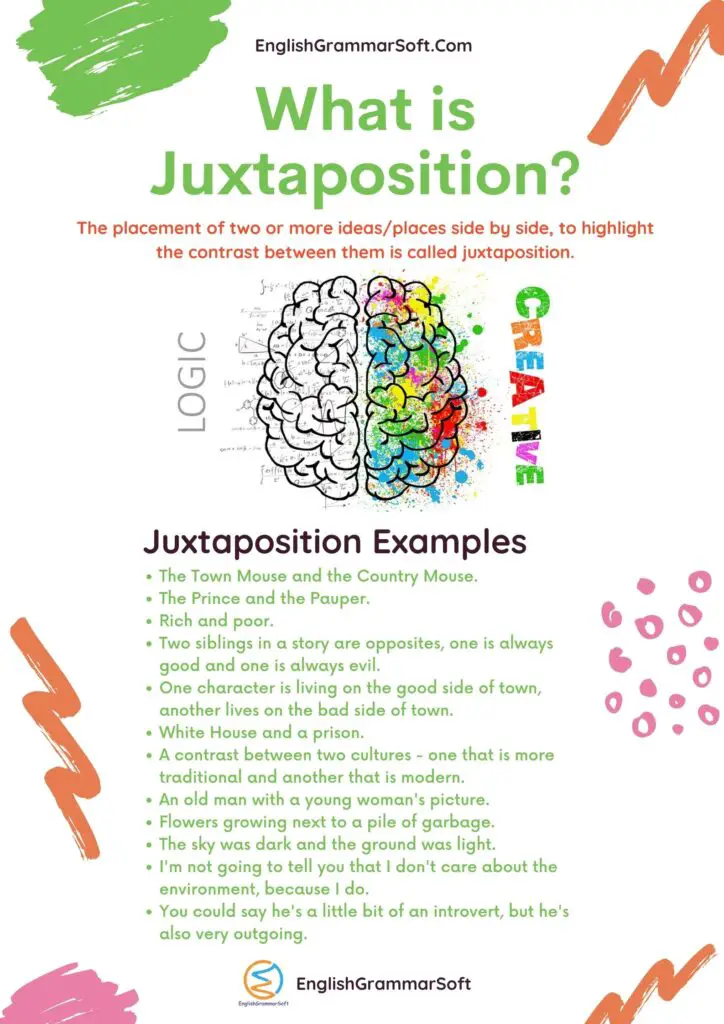
Further Reading
- Examples of Assonance
- Examples of Innuendo
- Examples of Exclamation in Literature
- Onomatopoeia Examples
- Interrogation Examples in Literature
- Types of Paradox in Literature
- Oxymoron Examples from Literature
- Synecdoche Examples in Literature
- Figures of Speech with Examples
- Antithesis Examples in Literature
- Euphemism Figure of Speech
- Pun Figure of Speech
- Metonymy Classification & Examples
- What is a simile in literature? How to write a good simile?
- Types of Metaphor with Examples
- Apostrophe as a Figure of Speech
- Personification with Examples
- Hyperbole Definition and Examples
- Fable Meaning and Examples in Literature
- What is Epigram in Figure of Speech?
